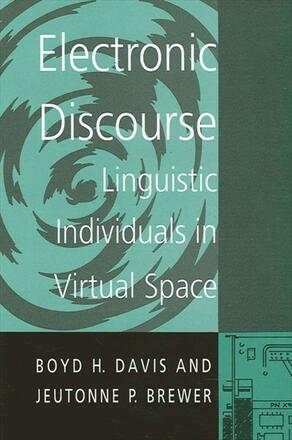
Electronic Discourse
Linguistic Individuals in Virtual Space
Alternative formats available from:
Investigates the new world of computer conferencing and details how writers use language when their social interaction is exclusively enacted through text on screens.
Description
This book examines interactive electronic discourse, exposing use of language that has the immediacy characteristic of speech and the permanence characteristic of writing. The authors created an asynchronous mainframe conference for language and linguistics classes in which they presented students with the task of analyzing the language used in original newspaper reports of the 1960s Civil Rights Sit-Ins. The authors observed how students wrote to each other across a wide range of social and virtual settings, how they built a real, if short-lived community within and across campus boundaries, and how they handled conflict while avoiding confrontation on sensitive issues of race and power. The result is a study that details how people use language when their social interaction is exclusively enacted through text on screens, and how their exchange is affected by computer conferencing.
The students who wrote in the electronic conferences faced two interrelated tasks: participating in a multiparty "conversation" and negotiating the individual identities they presented to one another in their virtual space. Individual writers used their own idiolects to influence the form and content of electronic discourse, adapting their own tacit knowledge of conversational strategies and written discourse to the new medium, as they created a real, although temporary, community.
In the electronic universe, writers adapt conventions of oral and written discourse to their own individual communicative ends. Electronic discourse, sometimes called computer mediated communication, presents us with texts in contact, and through those texts, their writers. Intertextuality in electronic conferences replaced a variety of conversational conventions. This book examines evidence for change, some trace of being and human interaction in virtual space, a domain where footprints are not in moondust but in ether.
Boyd H. Davis is Professor in the Department of English, University of North Carolina, Charlotte. Her work includes Dimensions of Language and Writing about Literature and Film (with Margaret B. Bryan), among others. Jeutonne P. Brewer is Associate Professor in the Department of English, University of North Carolina, Greensboro. She has written Dialect Clash in America: Issues and Answers (with Paul D. Brandes), among others.
Reviews
"This book describes a longitudinal study of college students acquiring and using one type of this new discourse, computer conferencing. The work is especially valuable because it describes use in as natural a setting as possible. " --Denise Murray, San Jose State University